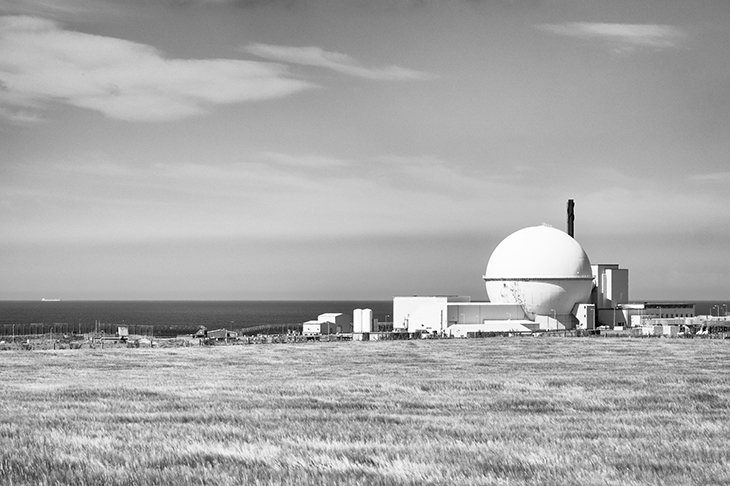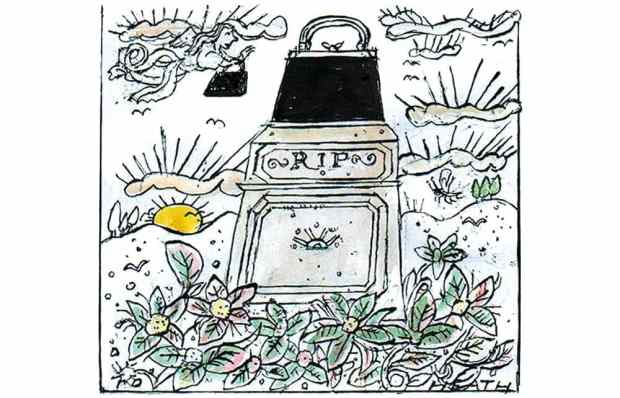Doubtless Spectator readers based in Caithness will scoff when I say that the old fishing port of Wick (top right corner of the country, close to John O’ Groats) is a bit remote. But for the rest of us, it is. Indeed, its relative isolation is one of the reasons it was chosen to house the archive of the UK nuclear industry, in a brand-new public building called Nucleus. Another is the presence of the Dounreay nuclear plant near Thurso, a big employer in the area, now being slowly dismantled. I went to see Nucleus, relishing the beautiful 110-mile drive up the east coast from Inverness.
Nucleus stands in the flat fieldscape north of the town next to another airport, Wick John O’Groats (only two scheduled services, to Edinburgh and Aberdeen). At first sight its low silvery bulk is like another provincial terminal or hangar. But as the approach road curls round and brings you in through a security fence, it becomes apparent that the building has a higher function. Rigorously geometric, its triangular apex of aluminium slats encloses an entrance courtyard with a large pond, behind which is the glass-walled entrance. It turns out to be by one of Scotland’s best architects, Neil Gillespie of the Edinburgh-based firm Reiach and Hall. Courtyards within the building have similar shallow pools, inspired by the lochans of the peaty Caithness ‘Flow Country’, and made of reddish Caithness stone.
Public it may be — this also houses the historic archive of the County of Caithness back to 1589, and there’s a reading room for the purpose. But the fact that, in the foyer, the glass cases with ancient books in them are accompanied by examples of fuel rods as used in nuclear power stations — some rather beautiful, some prosaic — tells you that something else is going on. There are also large models of ships, which turn out to be the kind used to transport nuclear material around the world.
The archive will preserve information which will be vital for a long time — given how long it takes to unbuild nuclear power stations and make them safe. And they don’t want just anyone popping in to read the ultra-sensitive stuff, any more than they want to lose it. So the material is in a large climate-controlled concrete vault. Despite the fact that you need special clearance to enter and have to be accompanied through successive glass security gates on your way to it, there’s nothing alarming in there: indeed it’s all rather boring, just a lot of those big rolling stacks you find in any institutional library.
Though there are a few boxes in evidence on the shelves — containing plans, drawings, documents, microfiches, film — most are yet to arrive. It will take several years to sort and gather together all the historic information on Britain’s nuclear history, scattered as it is in various nuclear establishments around the country from Harwell to Sellafield.
So it’s simultaneously public and not very public, is Nucleus. A distinctly curious place but, as I found, with jolly people in it who are rather proud of the technological history they are slowly and meticulously archiving. And it is a bit remote, and well guarded. As I drove away down the craggy coastline that glorious spring day, I found that reassuring.
Got something to add? Join the discussion and comment below.
Get 10 issues for just $10
Subscribe to The Spectator Australia today for the next 10 magazine issues, plus full online access, for just $10.
You might disagree with half of it, but you’ll enjoy reading all of it. Try your first month for free, then just $2 a week for the remainder of your first year.














Comments
Don't miss out
Join the conversation with other Spectator Australia readers. Subscribe to leave a comment.
SUBSCRIBEAlready a subscriber? Log in